Table of Contents
How to Generate Blog Posts Using Google Gemini AI: Ever stared at a blank screen, knowing you need fresh blog content but your brain’s running on empty? You’re not alone. A whopping 65% of content marketers struggle with consistent content creation.
What if generating engaging blog posts could be as simple as having a conversation? That’s where Google Gemini comes in—revolutionizing how we create content without the usual headaches.
Learning how to generate blog posts using Google Gemini isn’t just another tech trick; it’s about reclaiming your time while still publishing quality content your audience craves.
I’ve tested every AI content tool out there, and let me tell you—what Gemini can do in minutes used to take me hours. But there’s a specific framework that makes all the difference between generic AI fluff and content that actually converts.
Want to know what it is?
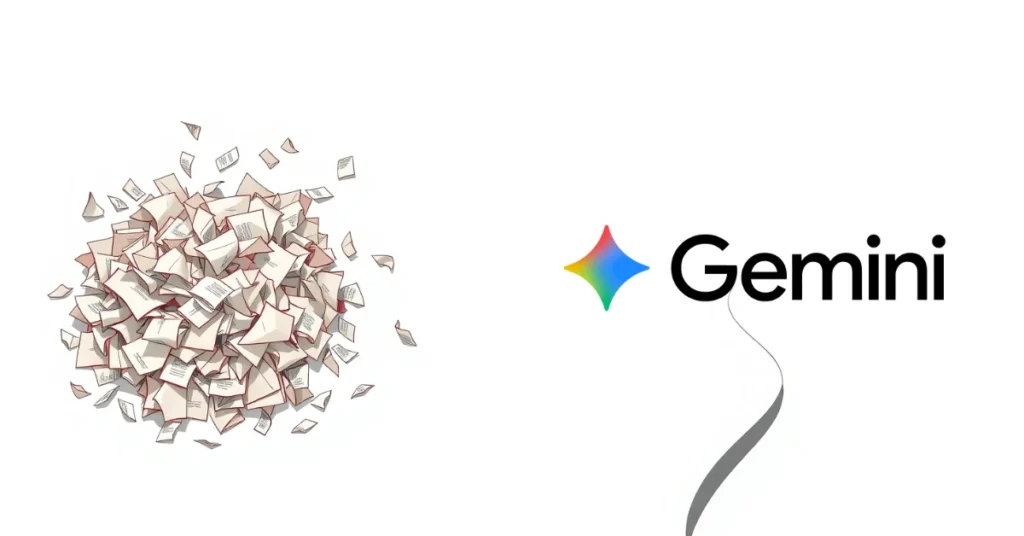
Understanding Google Gemini’s Capabilities
What makes Gemini different from other AI tools
Google Gemini stands out in the crowded AI landscape with some serious firepower. Unlike many other AI tools that excel at specific tasks, Gemini is multimodal—meaning it can understand and process text, images, code, and audio seamlessly. This versatility is a game-changer when you’re crafting blog posts that need visual elements alongside written content. ai gemini google
The real difference? Gemini’s reasoning capabilities. It doesn’t just string words together—it thinks through problems, making connections that feel genuinely helpful rather than formulaic. When you’re stuck on a blog section, Gemini can suggest approaches that actually make sense for your specific topic. How to Generate Blog Posts Using Google Gemini AI.
Plus, Gemini’s integration with Google’s ecosystem gives you direct access to recent information without the hallucinations or made-up facts that plague other AI tools. Your blog posts stay accurate and current—a huge advantage when readers are looking for reliable content.
Free vs paid features for blog creation
Gemini Free (Formerly Bard)
- 1024-character limit per prompt
- Limited image generation capabilities
- Standard processing speed
- Basic writing assistance features
- No API access for integration
Gemini Advanced ($20/month via Google One AI Premium)
- 32,000-character limit per prompt
- Advanced image generation and analysis
- Priority processing power
- Complex writing restructuring and editing
- Extended context memory between sessions
- API access for workflow integration
- How to Generate Blog Posts Using Google Gemini AI.
The free version handles basic blog outlines and short sections perfectly well. But when you’re developing comprehensive, research-heavy posts or need to maintain consistent voice across multiple articles, the Advanced tier pays for itself through time savings alone.
Setting up your Google Gemini account
Getting started with Gemini takes just minutes. Head to gemini.google.com and sign in with your Google account. No separate registration needed—your existing Google credentials work instantly.
After signing in, you’ll land on a clean interface with a prompt box. This is your creative command center. For blog creation, start by clicking the settings gear icon to customize your experience. Toggle on web search capability—this ensures your blog content stays factual and current. How to Generate Blog Posts Using Google Gemini AI.
Want to upgrade to Gemini Advanced? Click your profile picture in the top right, select “Gemini Advanced,” and follow the subscription prompts. The upgrade activates immediately, unlocking all premium features without any restart required.
Pro tip: Before diving into full blog creation, test Gemini’s capabilities with a few sample prompts about your niche. This helps you understand how to phrase requests for the best results when you’re ready to generate complete sections.

Preparing Your Blog Content Strategy
A. Identifying your target audience
Knowing who you’re writing for changes everything. Before you start crafting blog posts with Google Gemini, take time to understand your audience inside out.
Ask yourself: Who are these people? What problems keep them up at night? What solutions are they desperately searching for?
Create detailed audience personas that capture:
- Age ranges and demographics
- Professional backgrounds
- Content preferences (videos, long-form, how-tos)
- Pain points and challenges
- Goals and aspirations
- How to Generate Blog Posts Using Google Gemini AI.
When you truly understand your audience, your Gemini prompts become laser-focused. Instead of generic content nobody cares about, you’ll create posts that make readers think “this was written just for me.”
B. Determining key topics and keywords
Got your audience nailed down? Great. Now figure out what they’re actually searching for.
Start with keyword research tools like:
- Google Keyword Planner
- Semrush
- Ahrefs
- AnswerThePublic
- How to Generate Blog Posts Using Google Gemini AI.
Look for that sweet spot: keywords with decent search volume but manageable competition. Group similar keywords into topic clusters that make sense for your audience.
When feeding these keywords to Gemini, don’t just dump them in randomly. Weave them naturally into your prompts so the AI understands the context and search intent behind each term.
C. Creating a content calendar
Random posting gets random results. Instead, map out your Gemini-assisted content strategy with a proper calendar.
Your content calendar should include:
- Publication dates
- Blog post topics/titles
- Target keywords
- Content formats
- Promotion channels
- Who’s responsible for each step
- How to Generate Blog Posts Using Google Gemini AI.
Tools like Trello, Asana, or even a simple Google Sheet work perfectly. The key is consistency – when you plan ahead, you can batch your Gemini prompts and create content more efficiently.
D. Setting clear blog objectives
What’s the point of your blog? Seriously, why are you doing this?
Maybe you want to:
- Drive more traffic to your site
- Generate qualified leads
- Establish thought leadership
- Educate your audience
- Boost product awareness
- How to Generate Blog Posts Using Google Gemini AI.
Each objective requires different metrics and Gemini approaches. For lead generation, you’ll want Gemini to create content with clear CTAs and lead magnets. For thought leadership, you’ll prompt for more in-depth, original insights.
Set SMART goals (Specific, Measurable, Achievable, Relevant, Time-bound) for each content piece. This gives you a framework to evaluate whether your Gemini-generated content is actually working or just filling space.
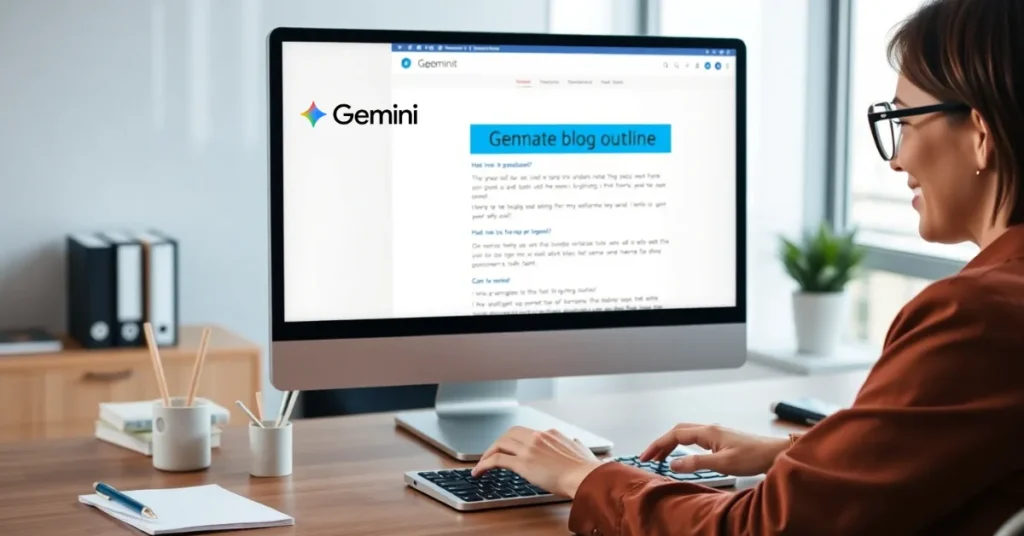
Crafting Effective Prompts for Gemini
Basic prompt structure that gets results
The magic of Google Gemini lies in how you talk to it. Want stellar blog content? Your prompt needs three key parts:
- Context – Tell Gemini who it’s writing for and why
- Specifics – Detail exactly what you need
- Format – Explain how you want the content structured
- How to Generate Blog Posts Using Google Gemini AI.
Think of it like briefing a new writer. You wouldn’t just say “write about dogs” – you’d give them guidance! Try this template:
You're creating content for [audience type]. Write a [content type] about [specific topic] that includes [key points]. Format it with [structural elements] and use a [tone descriptor] tone.
Using specific instructions to guide output
The difference between bland AI content and something that sounds like YOU wrote it comes down to your instructions.
Be crystal clear about what you want. Instead of asking for “a blog post about social media,” try:
“Write a practical guide for small business owners who are overwhelmed by social media. Include actionable tips they can implement in under 30 minutes per day.”
Details matter! Specify:
- Word count ranges
- Tone preferences (casual, authoritative, funny)
- Section breakdowns
- Content angles (“focus on budget-friendly solutions”)
- What to avoid (“Don’t recommend paid tools”)
- How to Generate Blog Posts Using Google Gemini AI.
Including formatting requirements
Formatting makes your blog posts scannable and professional. Tell Gemini exactly how to structure your content:
- Request specific heading hierarchies (H2, H3, H4)
- Ask for bullet points for easy scanning
- Specify if you want numbered steps for tutorials
- Request tables for comparisons
- Mention if you need short paragraphs for readability
- Ask for bold text on key points
- How to Generate Blog Posts Using Google Gemini AI.
This saves you tons of editing time. Instead of reformatting everything manually, you’ll get content that’s nearly ready to publish.
Examples of successful blog prompts
Here are real prompts that deliver excellent results:
For a how-to post:
Write a practical how-to guide for beginner gardeners about starting an herb garden indoors. Include sections on selecting containers, choosing the right herbs, proper lighting, watering tips, and common mistakes to avoid. Format with H3 headings, bullet points for supplies needed, and bold important warnings. Use a friendly, encouraging tone that assumes no prior gardening knowledge.
For a listicle:
Create a blog post titled "7 AI Tools That Will Transform Your Content Creation in 2024." For each tool, include: what problem it solves, key features, pricing (mention if there's a free tier), and a real use case. Format each tool as an H3 heading with short, scannable paragraphs. Write in a conversational tone for digital marketers who understand basic AI concepts but aren't technical experts.
The best prompts give Gemini enough guardrails to stay focused while delivering content that actually sounds like you wrote it.
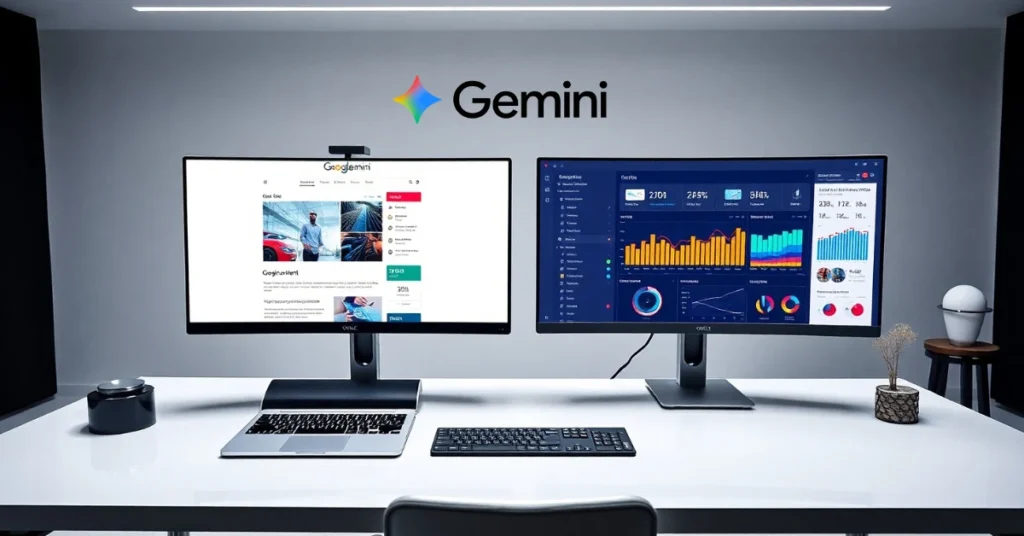
Generating First-Draft Content
A. Best practices for topic development
Want better content from Gemini? Start with laser-focused topics. Don’t just say “write about fitness” – instead try “create a guide on high-intensity interval training for busy professionals.” This specificity gives Gemini clear boundaries to work within.
Break complex topics into smaller chunks. Instead of asking for “everything about SEO,” request specific sections like “technical SEO for e-commerce sites” followed by “link-building strategies for beginners.”
Don’t forget to add some personal flavor. Share your unique angle or experience with the topic, which helps Gemini create content that sounds more like you. Something like “I’ve tried keto for 6 months and want to highlight the challenges” gives Gemini context it can use.
B. How to request different writing styles
Gemini can mimic virtually any writing style – you just need to ask clearly. Want something casual? Say “write this in a conversational, friendly tone like you’re talking to a friend.” Need professional content? Try “use a formal, authoritative tone appropriate for a business audience.”
You can get even more specific:
- “Write like a tweet thread”
- “Use the style of a personal letter”
- “Match the tone of The Economist magazine”
- How to Generate Blog Posts Using Google Gemini AI.
Pro tip: Share examples of writing styles you love, and Gemini will match them. Simply paste a paragraph with the style you want and ask Gemini to follow that pattern.
C. Techniques for longer-form content
Creating in-depth content with Gemini requires strategy. Start by building a detailed outline – ask Gemini to create a structured framework with main points and subpoints before generating the full content. How to Generate Blog Posts Using Google Gemini AI.
Chain your prompts together. Instead of requesting 2,000 words at once (which often leads to repetition), ask for section-by-section content. Say something like: “Let’s write this piece section by section. Start with the introduction focusing on [specific angle].”
Use follow-up prompts like “expand on the third point with more examples” or “add more detail about [specific aspect]” to build depth gradually.
D. Managing word count and content depth
Finding the sweet spot between length and quality takes practice. Always specify your target word count upfront: “Write approximately 800 words on this topic.”
For deeper content, focus on examples and data rather than just more words. Try: “Include 3-4 real-world examples that illustrate this point” or “Support these claims with relevant statistics.”
If Gemini generates too much content, ask it to trim while preserving key points: “Condense this to 500 words while keeping all the main arguments intact.” Too brief? Request elaboration on specific sections that need more depth.
E. Extracting unique insights from Gemini
Gemini shines when pushed beyond basic information. Ask questions like “What’s a counterintuitive perspective on this topic?” or “What do most people get wrong about this subject?”
Try comparative prompts: “Compare and contrast these two approaches and identify which situations each works best for.” This forces more nuanced analysis. How to Generate Blog Posts Using Google Gemini AI.
Challenge Gemini directly: “Most articles on this topic say X, but what alternative viewpoints exist?” or “What aspects of this topic are rarely discussed but should be?”
Finally, use scenario-based prompts: “How would this strategy work differently for a startup versus an established business?” These contextual questions often yield fresh, practical insights you won’t find in standard content.

Editing and Enhancing AI-Generated Content
Critical review process for AI writing
AI content from Gemini isn’t perfect right out of the gate. You need to review it with a critical eye. Start by reading the entire output and asking yourself: “Does this actually answer what I wanted?” Sometimes Gemini misses the mark or wanders off topic.
Look for areas where the AI sounds robotic or repetitive. These are dead giveaways of AI-generated content. Highlight sentences that feel unnatural or use awkward phrasing. Pay special attention to transitions between paragraphs – that’s where the logic often breaks down. How to Generate Blog Posts Using Google Gemini AI.
Another red flag? Generic statements that don’t provide real value. If you see vague advice like “it’s important to optimize your content,” without specific tactics, that needs your human touch.
Adding your personal voice and expertise
The magic happens when you inject your personality into Gemini’s framework. Think of the AI output as a first draft that needs your unique flavor. Add personal anecdotes, specific examples from your experience, or industry insights only you could provide.
Your writing voice is like your fingerprint – totally unique. Do you use humor? Are you direct and no-nonsense? Do you love pop culture references? Whatever makes your writing distinctly “you” should be amplified. How to Generate Blog Posts Using Google Gemini AI.
When editing, read sections aloud. If it doesn’t sound like something you’d actually say, rewrite it until it does. Your readers follow you for YOUR perspective, not generic AI content.
Fact-checking Gemini’s output
Don’t blindly trust what Gemini produces. AI models can confidently present incorrect information or outdated facts. For any statistics, quotes, or specific claims, verify through trusted sources before publishing.
Common issues to watch for:
- Made-up statistics or research
- Outdated information (Gemini’s knowledge has a cutoff date)
- Incorrect attributions or quotes
- Oversimplified explanations of complex topics
- How to Generate Blog Posts Using Google Gemini AI.
When in doubt, double-check. Your reputation depends on accuracy, and no AI tool is a substitute for proper fact-checking.
Improving SEO elements
Gemini might give you decent content, but optimizing for search requires your expertise. Review your target keywords and ensure they appear naturally throughout the content – especially in headings, the first paragraph, and meta descriptions.
Don’t just stuff keywords in randomly. Focus on:
- Creating compelling H2-H4 subheadings that include keywords
- Writing meta descriptions that entice clicks while containing key terms
- Adding internal links to your other relevant content
- Including semantic keywords related to your main topic
- How to Generate Blog Posts Using Google Gemini AI.
Check your content’s readability scores too. Break up long paragraphs, use bullet points for scannable content, and ensure sentence structure varies throughout. Search engines reward content that readers actually engage with – not keyword-stuffed walls of text.

Optimizing Blog Posts for Publication
Formatting for readability
Your blog post might contain brilliant ideas, but if it’s a wall of text, readers will bounce faster than you can say “Gemini.” Break up your content with these simple tricks:
- Short paragraphs: Keep them to 2-3 sentences max
- Bullet points: Perfect for lists (like this one!)
- Bold key points: Help readers scan for important info
- White space: Don’t crowd your ideas – give them room to breathe
- How to Generate Blog Posts Using Google Gemini AI.
Most readers skim content first. Make your post scannable with descriptive subheadings that follow a logical flow. Think of them as signposts guiding your reader through your content journey.
Adding compelling visuals with Gemini’s help
Gemini can create custom images that perfectly match your blog’s message. Here’s how to get the best results:
- Be super specific in your prompts (“Create an image of someone using a laptop with Gemini’s interface visible on screen”)
- Mention style preferences (“illustration style” or “photorealistic”)
- Include color schemes that match your brand
- Request images that show concepts in action rather than static objects
- How to Generate Blog Posts Using Google Gemini AI.
Images break up text and explain complex ideas in seconds. Place them strategically near related content for maximum impact.
Creating attention-grabbing headlines
Your headline determines whether anyone reads your post at all. No pressure, right?
Use Gemini to generate multiple headline options by prompting it with your topic and these formulas:
- How-to headlines: “How to [Achieve Benefit] Using Google Gemini”
- Question headlines: “Want to [Desired Outcome]? Here’s How Gemini Can Help”
- List headlines: “7 Ways Google Gemini Transforms Your Blogging Process”
- Problem-solution: “Struggling with [Pain Point]? Gemini Has the Answer”
- How to Generate Blog Posts Using Google Gemini AI.
Test your headlines by asking yourself: Does this promise clear value? Would I click on this? Is it specific enough to stand out?

Scaling Your Content Production
Creating templates for recurring blog formats
Want to save time and maintain consistency? Templates are your secret weapon. Create reusable formats for different types of content you regularly publish:
- Product reviews
- How-to guides
- Case studies
- Comparison posts
- Industry news roundups
- How to Generate Blog Posts Using Google Gemini AI.
With Google Gemini, you can build prompts that follow your template structure. For example, a product review template might include sections for features, benefits, drawbacks, and final verdict. Once you have these templates, you’ll cut your planning time in half and ensure your posts maintain a consistent structure your readers will appreciate.
Batch processing multiple posts
Stop creating content one piece at a time. With Gemini, you can batch process similar topics to maximize efficiency. Try these approaches:
- Generate outlines for 5-10 posts in a single session
- Create all your monthly social media teasers at once
- Draft multiple introductions for upcoming articles
- How to Generate Blog Posts Using Google Gemini AI.
Batching similar tasks helps you maintain a consistent voice across content while leveraging Gemini’s capabilities to handle volume. The key is organizing your prompts effectively—create a spreadsheet with your topic clusters and batch-generate the foundation for multiple posts.
Maintaining quality while increasing quantity
Scaling doesn’t mean sacrificing quality. In fact, when done right, you’ll enhance it. Follow these practices:
- Establish clear quality criteria before generating content
- Create a checklist for human review (fact-checking, brand voice, etc.)
- Set up a feedback loop to refine your prompts based on results
- Implement a two-pass system: first draft with Gemini, then human editing
- How to Generate Blog Posts Using Google Gemini AI.
Remember that Gemini is your writing partner, not your replacement. The most successful content creators use AI to handle the heavy lifting while focusing their human expertise on adding unique insights, personal experiences, and creative angles.
Measuring and improving content performance
Numbers don’t lie. To truly scale effectively with Gemini, you need to track what’s working:
- Monitor engagement metrics (time on page, shares, comments)
- Track conversion rates from AI-generated vs. human-written content
- Analyze keyword rankings to identify content gaps
- Test different prompt strategies and compare results
- How to Generate Blog Posts Using Google Gemini AI.
Don’t just collect data—act on it. When you spot a high-performing post, analyze what made it successful. Was it the structure? The angle? The examples used? Then update your Gemini prompts to incorporate those winning elements into future content.

Conclusion
Google Gemini offers a powerful solution for content creators looking to streamline their blog production process. By understanding Gemini’s capabilities, preparing a solid content strategy, and mastering prompt engineering, you can generate high-quality first drafts that require minimal editing. The key to success lies in properly refining AI-generated content and optimizing it for both readers and search engines before publication. How to Generate Blog Posts Using Google Gemini AI.
As you implement these techniques, you’ll discover that Gemini can significantly scale your content production without sacrificing quality. Start small, experiment with different prompts, and develop a workflow that combines AI efficiency with your unique voice and expertise. With practice, you’ll find the perfect balance between automation and human creativity, allowing you to publish more consistently while maintaining the authenticity your audience expects.
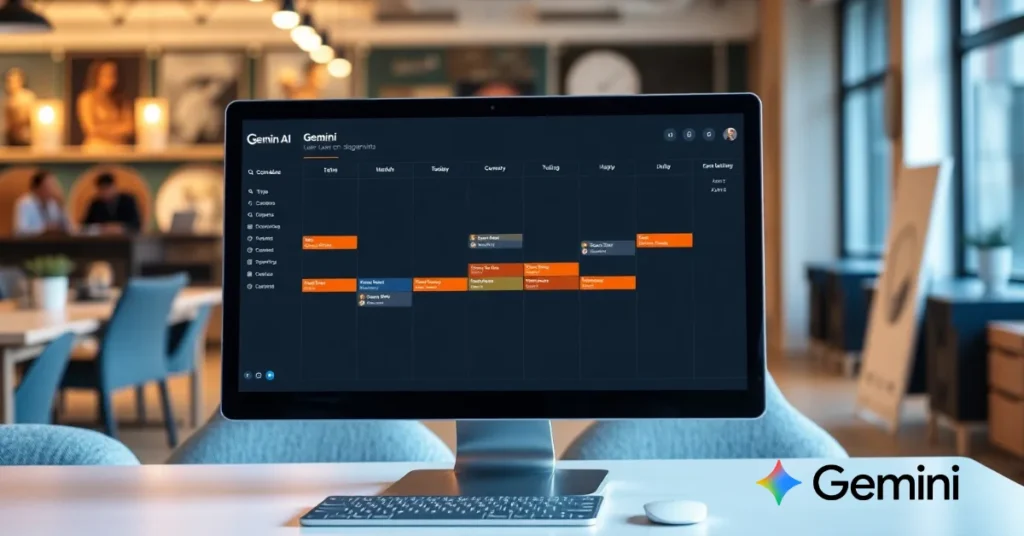
Frequently Asked Questions (FAQs) About How to Generate Blog Posts Using Google Gemini AI
What is Google Gemini AI, and how can it help with blogging?
Google Gemini is a multimodal AI that understands text, images, code, and even audio. For bloggers, this means it can generate well-structured posts, suggest visuals, and provide fact-checked, up-to-date content. How to Generate Blog Posts Using Google Gemini AI.
How is Gemini different from other AI writing tools?
Unlike most AI tools, Gemini integrates directly with Google’s ecosystem for real-time, reliable data. Its reasoning capabilities also make blog content more logical, engaging, and less formulaic. How to Generate Blog Posts Using Google Gemini AI.
Do I need Gemini Advanced to create blog posts?
Not necessarily. The free version works well for outlines, short posts, and brainstorming. But Gemini Advanced offers longer prompts, better editing tools, and API integration—ideal for professional bloggers producing content at scale. How to Generate Blog Posts Using Google Gemini AI.
How do I set up a Google Gemini account for blogging?
Simply visit gemini.google.com and sign in with your Google account. From there, enable web search in settings to keep your blog posts accurate and current. How to Generate Blog Posts Using Google Gemini AI.
What’s the best way to structure prompts for blog writing?
Great prompts include:
Context: who the blog is for
Specifics: what exactly you need covered
Format: headings, tone, and structure
The clearer your instructions, the closer Gemini’s draft will be to your final version.
How to Generate Blog Posts Using Google Gemini AI.
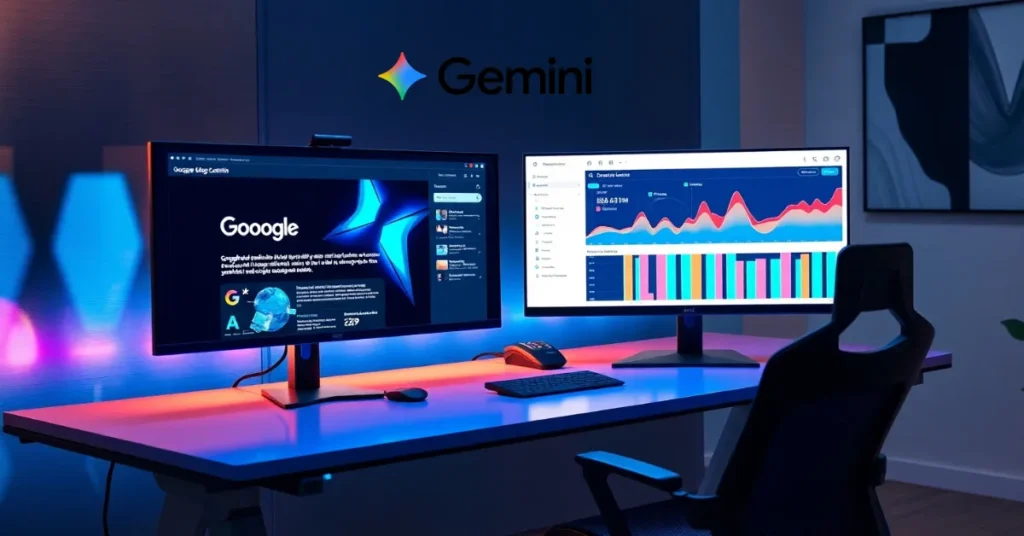
Can Gemini create long-form content, like 2,000-word articles?
Yes, but it’s best to generate content section by section. Start with an outline, then build each part with detailed prompts. This avoids repetition and improves content depth. How to Generate Blog Posts Using Google Gemini AI.
How do I make sure Gemini’s content doesn’t sound generic?
Add your personal voice. Use Gemini’s drafts as a foundation, then insert anecdotes, examples, or insights from your experience. This ensures your blog feels authentic and unique. How to Generate Blog Posts Using Google Gemini AI.
How can Gemini help with SEO optimization?
Gemini can weave in target keywords, generate keyword-rich subheadings, and even draft meta descriptions. But you should still refine for natural flow, add internal links, and fact-check for accuracy. How to Generate Blog Posts Using Google Gemini AI.
Can Gemini generate visuals for blog posts too?
Yes. Gemini supports image generation (especially in the Advanced plan). You can request custom graphics, illustrations, or concept visuals that align with your blog’s message and branding. How to Generate Blog Posts Using Google Gemini AI.
What’s the best workflow for blogging with Gemini?
Use Gemini to brainstorm ideas and outlines
Generate first-draft sections with clear prompts
Add your voice, examples, and expertise
Fact-check and optimize for SEO
Publish with visuals Gemini helps create
This hybrid workflow ensures high-quality, consistent blog content without sacrificing originality.
How to Generate Blog Posts Using Google Gemini AI.

2 thoughts on “How to Generate Blog Posts Using Google Gemini AI: Powerful Blogging 2025”